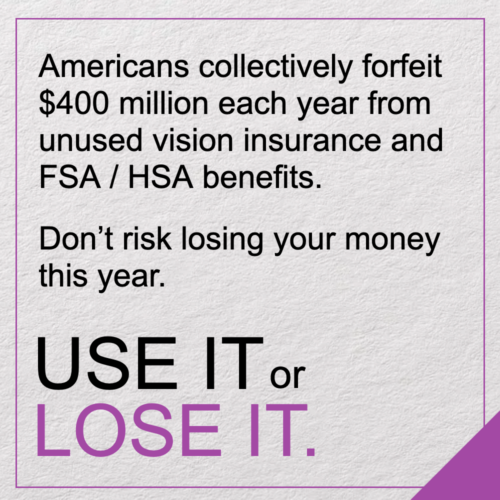Presbyopia is a natural part of aging that affects nearly everyone over the age of 40. It occurs when the lens of the eye becomes less flexible with time, making it difficult to focus on close objects. This condition is frustrating but entirely manageable with the right approach, including the using of reading glasses.
What is Presbyopia?
Presbyopia is a gradual loss of the eye’s ability to focus on nearby objects. As we age, the lens in the eye becomes less flexible and more rigid. The muscles surrounding the lens also weaken, making it harder for the eye to adjust and focus. This process is different from farsightedness, which is related to the shape of the eyeball.
Symptoms of Presbyopia
The symptoms of presbyopia often start with a gradual difficulty in reading small print, especially in low light. Many people find themselves holding reading materials farther and farther away to see clearly. Headaches and eye strain are also common when engaging in tasks that require close focus, such as reading or sewing.
Common Treatments
- Reading Glasses: Reading glasses are often the first line of defense against presbyopia. They are available in various strengths and can be purchased over the counter or through a prescription. Reading glasses are designed specifically for close work and are typically worn only when needed.
- Progressive Lenses: Progressive lenses are a popular choice for those who need vision correction for both near and distance vision. These lenses offer a seamless transition between different prescription strengths, allowing the wearer to see clearly at any distance. Unlike bifocals, which have a visible line separating the different prescriptions, progressive lenses provide a more natural visual experience.
- Multifocal Contact Lenses: Multifocal contact lenses are another option for managing presbyopia. These lenses are designed with multiple zones of vision correction, allowing the wearer to see clearly at various distances without needing glasses. Multifocal contacts are available in both soft and rigid gas-permeable materials and can be used for daily wear, depending on the patient’s needs.
- Monovision: Monovision is a technique where one eye is corrected for distance vision and the other for near vision. This can be achieved with contact lenses or through refractive surgery. While monovision may take some time to adjust to, it can be an effective solution for those with presbyopia who wish to avoid glasses.
- Prescription Eyedrops: Vuity is a new prescription eyedrop approved by the FDA for treating presbyopia. It works by temporarily reducing the size of the pupil, which increases depth of focus and allows for clearer near vision, similar to how a camera aperture works. Vuity is typically used once or twice a day and offers a convenient alternative to glasses or contact lenses for those with mild to moderate presbyopia.
Surgical Options
For those looking for a more permanent solution, several surgical options are available to treat presbyopia:
- LASIK and PRK: While LASIK and PRK are primarily used to correct myopia, hyperopia, and astigmatism, they can also be used in monovision treatment for presbyopia. In monovision LASIK, one eye is corrected for distance vision, and the other is left slightly nearsighted for close-up tasks. This option is best for those who have already adapted to monovision with contact lenses.
- Refractive Lens Exchange (RLE): Refractive Lens Exchange involves replacing the eye’s natural lens with an artificial intraocular lens (IOL). This procedure is similar to cataract surgery and can correct both presbyopia and other refractive errors. Multifocal IOLs are available to provide clear vision at multiple distances, making them an attractive option for those with presbyopia.
- Corneal Inlays: Corneal inlays are tiny devices implanted into the cornea to improve near vision. The inlays work by focusing light entering the eye, increasing depth of focus and allowing for better reading vision. This option is less invasive than lens replacement surgery and can be removed if necessary.

Managing Presbyopia in Daily Life
Living with presbyopia doesn’t mean giving up on the activities you love. By using the right corrective measures and making a few adjustments, you can continue to enjoy reading, crafting, and other close-up tasks.
- Good Lighting: Ensure you have adequate lighting when reading or doing close work. Bright, direct light can help reduce eye strain and make it easier to focus on small details.
- Take Breaks: If you’re working on a task that requires prolonged close focus, take regular breaks to rest your eyes. The 20-20-20 rule is a good guideline: every 20 minutes, look at something 20 feet away for at least 20 seconds.
- Eye Exercises: While there’s no way to prevent presbyopia, eye exercises can help strengthen the eye muscles and maintain flexibility in the lens. Simple exercises like focusing back and forth on a near object and then a distant one can be beneficial.
The Future of Presbyopia Treatment
As technology advances, new treatments for presbyopia are continually being developed. Research into more effective eyedrops, advanced surgical techniques, and innovative lens designs promises to offer even better options for those with presbyopia in the future.
Presbyopia is a natural part of aging, but it doesn’t have to interfere with your quality of life. With a range of treatment options available, from simple reading glasses to advanced surgical procedures, you can find a solution that fits your lifestyle and vision needs. If you’re experiencing symptoms of presbyopia, schedule an eye exam with our optometrists to discuss the best course of action for you. Whether you choose progressive lenses, multifocal contacts, or a more permanent surgical option, managing presbyopia is possible with the right care and guidance.
At Optical Illusions: An Optometric Practice, we prioritize your eye health and provide the best voted eye exams. Our experienced optometrists and opticians use state-of-the-art technology to determine your vision prescription. Contact our team to schedule your appointment at 1 of our 4 conveniently located offices using your VSP insurance benefits.




